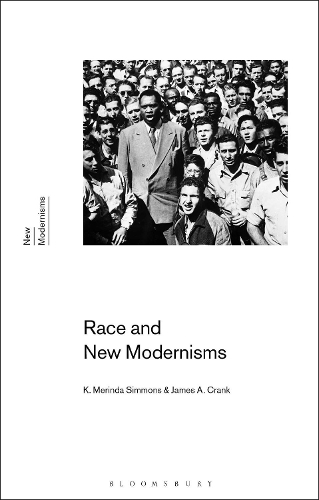
Race and New Modernisms
(Paperback)
Publishing Details
Race and New Modernisms
By (Author) Professor K. Merinda Simmons
By (author) Dr James A. Crank
Bloomsbury Publishing PLC
Bloomsbury Academic
5th September 2019
United Kingdom
Classifications
Tertiary Education
Non Fiction
Ethnic studies / Ethnicity
Ethnic groups and multicultural studies
809.933552
Physical Properties
Paperback
224
Width 138mm, Height 214mm, Spine 14mm
300g
Description
From the Harlem and Southern Renaissances to postcolonial writing in the Caribbean, Race and New Modernisms introduces and critically explores key issues and debates on race and ethnicity in the study of transnational modernism today. Topics covered include: Key terms and concepts in scholarly discussions of race and ethnicity European modernism and cultural appropriation Modernism, colonialism, and empire Southern and Harlem Renaissances Social movements and popular cultures in the modernist period Covering writers and artists such as Josephine Baker, W.E.B. Du Bois, T.S. Eliot, William Faulkner, Marcus Garvey, douard Glissant, Ernest Hemingway, Zora Neale Hurston, Claude McKay, and Paul Robeson, the book considers the legacy of modernist discussions of race in twenty-first century movements such as Black Lives Matter.
Reviews
Race and New Modernisms is a quick and handy introduction to the last 25 years of modernist scholarship, but perhaps its real value will serve in announcing that were entering a new, as yet unnamed era in modernist studies. * American Literary History Online Review *
A tour de force! Race and New Modernisms succeeds in circuiting race through its primitivizing and exoticizing deployment in canonical modernism to a series of connected sites (the Caribbean, the US South, Harlem, and Paris) and all the while presenting a self-reflexive, savvy interrogation of the ways in which we know race. They demonstrate that modernism could not have existed without its racial identifications, not only in its art forms, but also in its rhetoric of nationhood, civilization, cosmopolitanism, and otherness. Even better, they show how race is not an inert or self-evident thing, but a complex and shifting system of social organization that is struggled over at every turn, from the beginnings of modernism until today. This critical primer will be indispensable for teaching and research on race and modernism for years to come. * Laura Winkiel, Associate Professor of English, University of Colorado at Boulder, USA *
This is a lucid guide to the complex relationship between conceptions of race and the diverse cultures of modernism. Simmons and Crank invite readers to consider multiple aspects of race in the early 20th century, demonstrating that any understanding of regional, national, and global modernisms is inseparable from an understanding of racial discourses. -- Urmila Seshagiri, Associate Professor, University of Tennessee Humanities Center
K. Merinda Simmons and James A. Crank have written a probing and valuable book ... [it] rewards a close reading and succeeds in establishing a basis for both scholars and lay readers to rethink common assumptions about both modernism and writings about race. * Modern Language Review *
Author Bio
James A. Crank is Associate Professor at the University of Alabama, USA. His books include Understanding Sam Shepard (2012), New Approaches to Gone with the Wind (2015), and Understanding Randall Kenan (2019). K. Merinda Simmons is Associate Professor at the University of Alabama, USA. Her books include Changing the Subject: Writing Women Across the African Diaspora (2014) and The Trouble with Post-Blackness (co-edited with Houston A. Baker, Jr., 2015).
